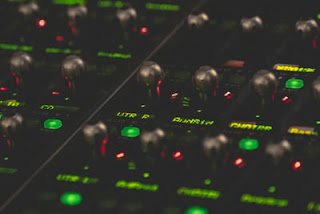aka Sociothermodynamics
Let's not forget that we do live in the era of Big Data, and it's only getting Bigger.
Big data requires new methods of analysis. As we get more and more info about the world around us, we need more basic, underlying frameworks to organize and interpret that data. And that is where physics comes to the rescue. Physicists are used to looking at complex systems with millions, billions and trillions of interactions, and being able to make predictions about their behaviors.
You would think it would show up in the news way more often, because it sure sounds like magic to me. But alas, it's not an everyday headline, so I thought I would spit a few terms up here, just to help stay familiar. This is in relation to urban design and economics.
Inness - the tendency for people to gravitate to the socioeconomic center of a city; this can be correlated to socioeconomic factors, infrastructure factors, and even mortality rates, and an example would be how well-developed cities with multiple socioeconomic centers would have a low inness value.
Betweenness Centrality - a measure of how many things you are in the between of; an example would be how some locations are at the intersection of more than two streets.
These examples are pretty straightforward because they're based on physical objects or locations. Things get a bit more abstract when we start to talk about the spread of disease through a population, or better yet, memetic propagation, which is the spread of ideas.
The practical applications of using network science to predict complex systems are much needed -- the way people move throughout a city is increasingly important when more than half the world's population is now living in cities. But I'd rather hear about how we can predict your chances of adopting a new slang term based on the gesture recognition of your 5 best friends, for example.
Post Script:
Urban Planning and Big Data
Study finds online restaurant information can closely predict key neighborhood indicators
July 2019, phys.org
What can Wikipedia tell us about human interaction?
June 2019, phys.org
"...if we look at Wikipedia pages about the 2015 Paris terrorist attacks, we can see that the page about the attack is directly connected to the page about Charlie Hebdo magazine, and also to a cluster of pages representing terrorist organizations," Miz explains.
Benzi and Miz call this kind of information-seeking "collective memory," as it can reveal how current events trigger memories of the past.
Hyphens in paper titles harm citation counts and journal impact factors
June 2019, phys.org
Notes:
Can the laws of physics untangle traffic jams, stock markets, and other complex systems?
Mar 2019, phys.org
Here's some other topics at the intersection of science and society:
The hipster effect - Why anti-conformists always end up looking the same
Mar 2019, phys.org
Social media can predict what youíll say, even if you donít participate
Jan 2019, Ars Technica
The 2008 recession associated with greater decline in mortality in Europe
Feb 2019, phys.org
"Periods of macroeconomic recession are associated with lower levels of pollution and fewer accidents in the workplace and on the roads. These are the factors most likely to have the greatest influence on accelerating the decline in mortality. Alcohol and tobacco consumption also fall during periods of greater austerity, as do the prevalences of sedentary lifestyles and obesity. While the underlying mechanisms are still not well established, the findings of some studies also point to the influence of other factors, such as work stress and the fact that healthy habits demand time, something less available to a person working in a full-time job."
And finally, totally unrelated wordporn:
No longer qubits but qutrits!
Complex quantum teleportation achieved for the first time - qutrits






















